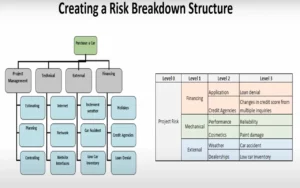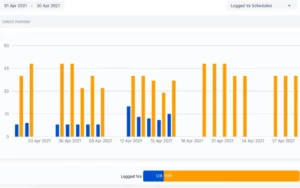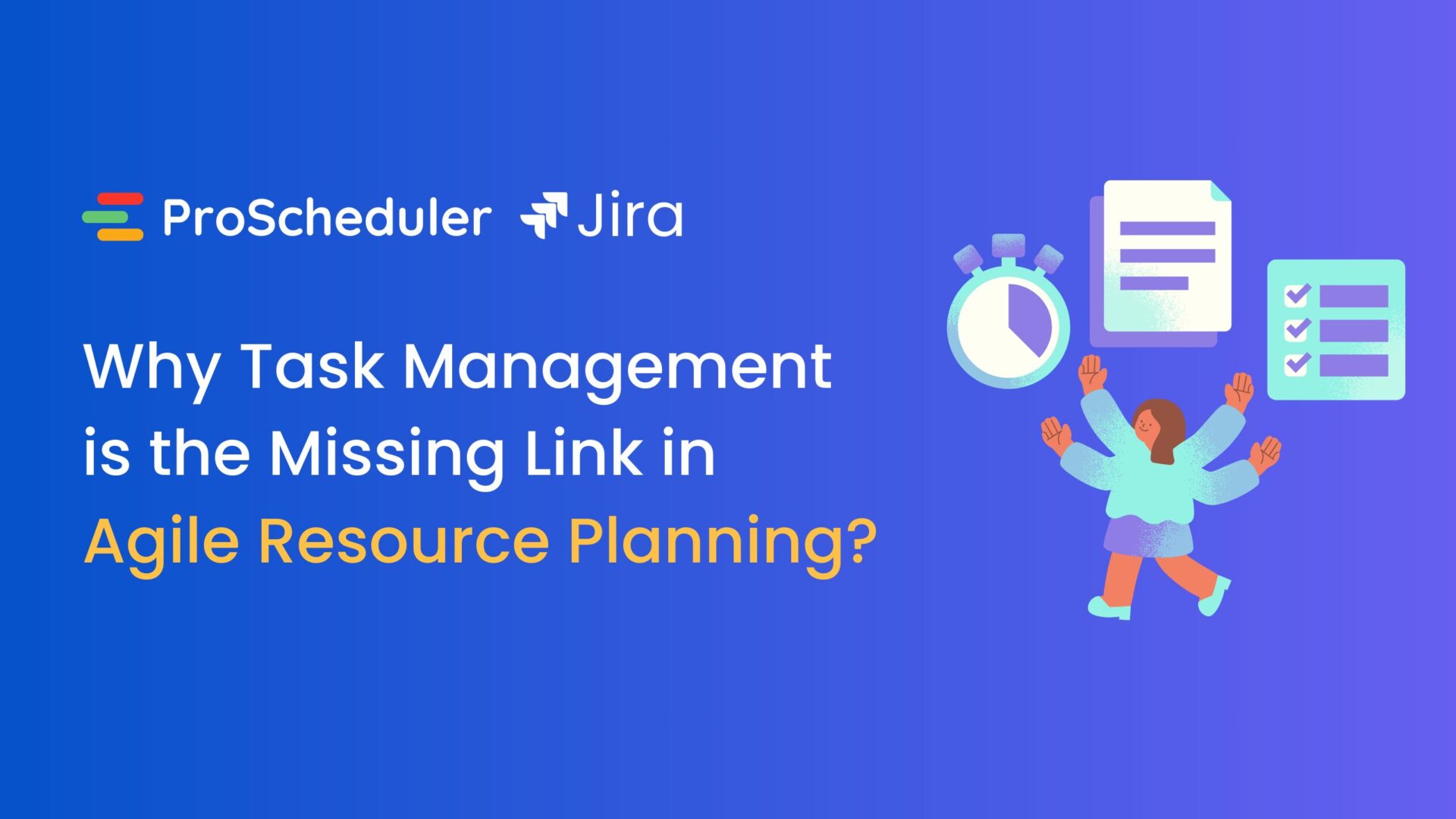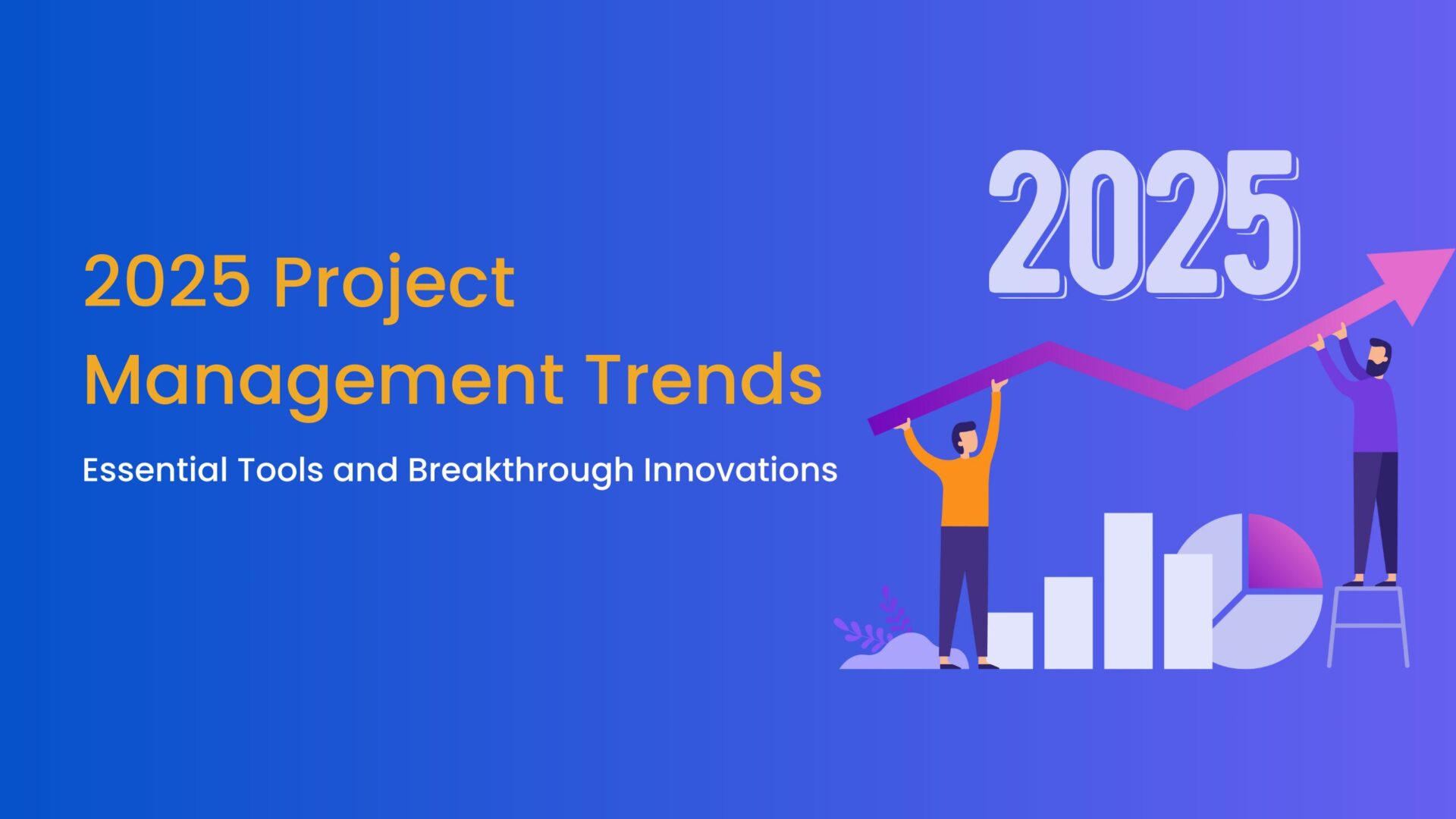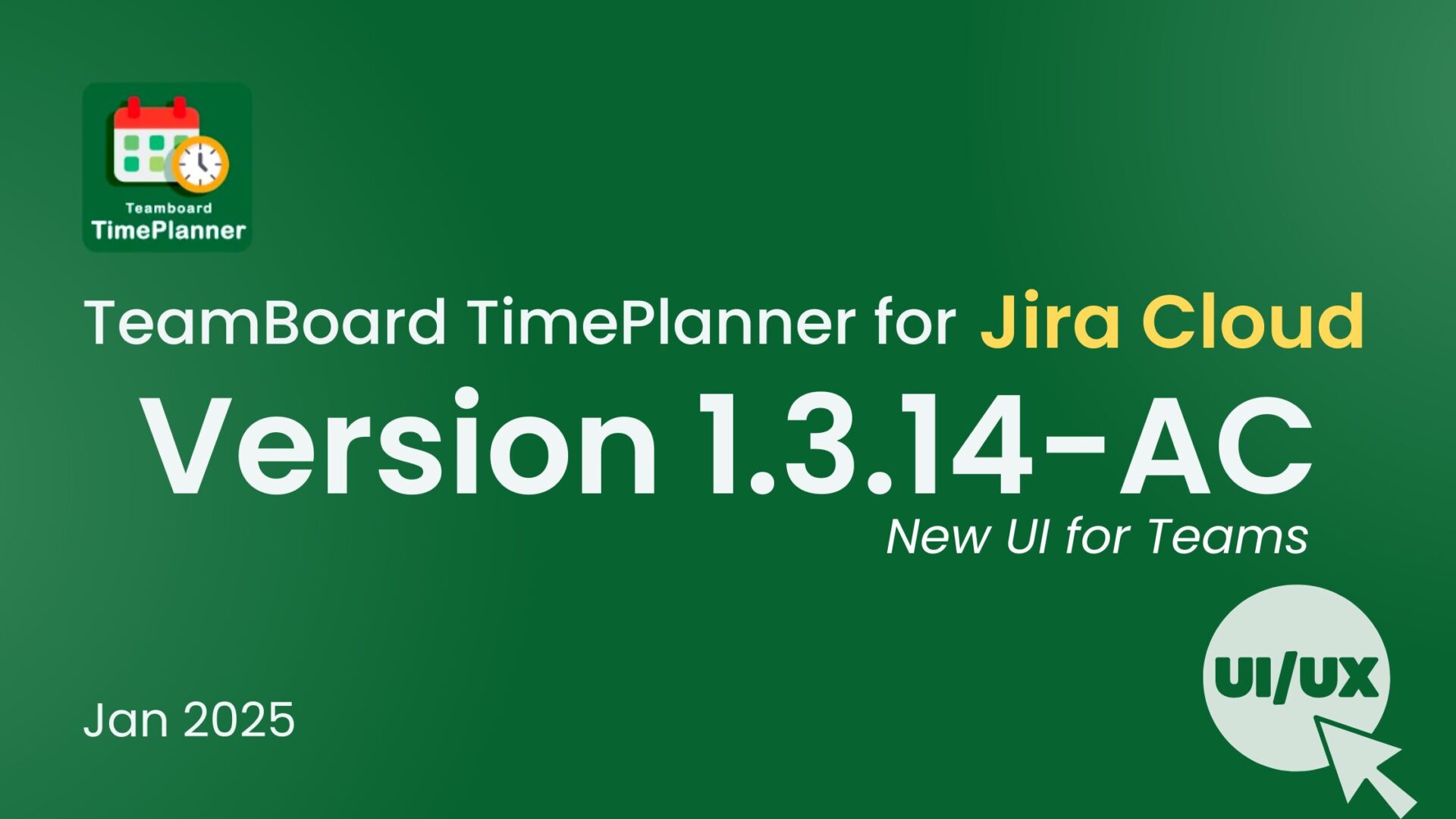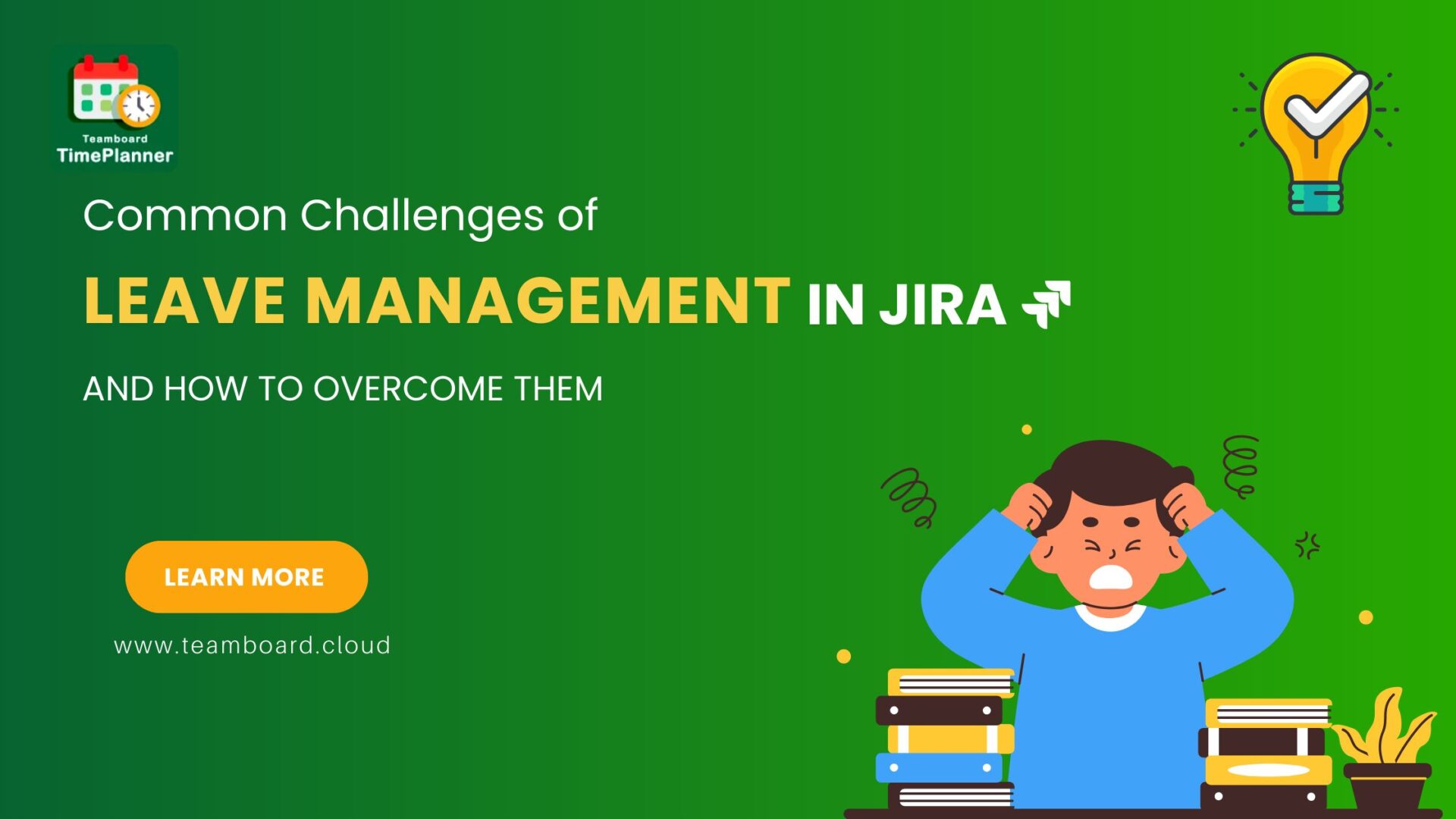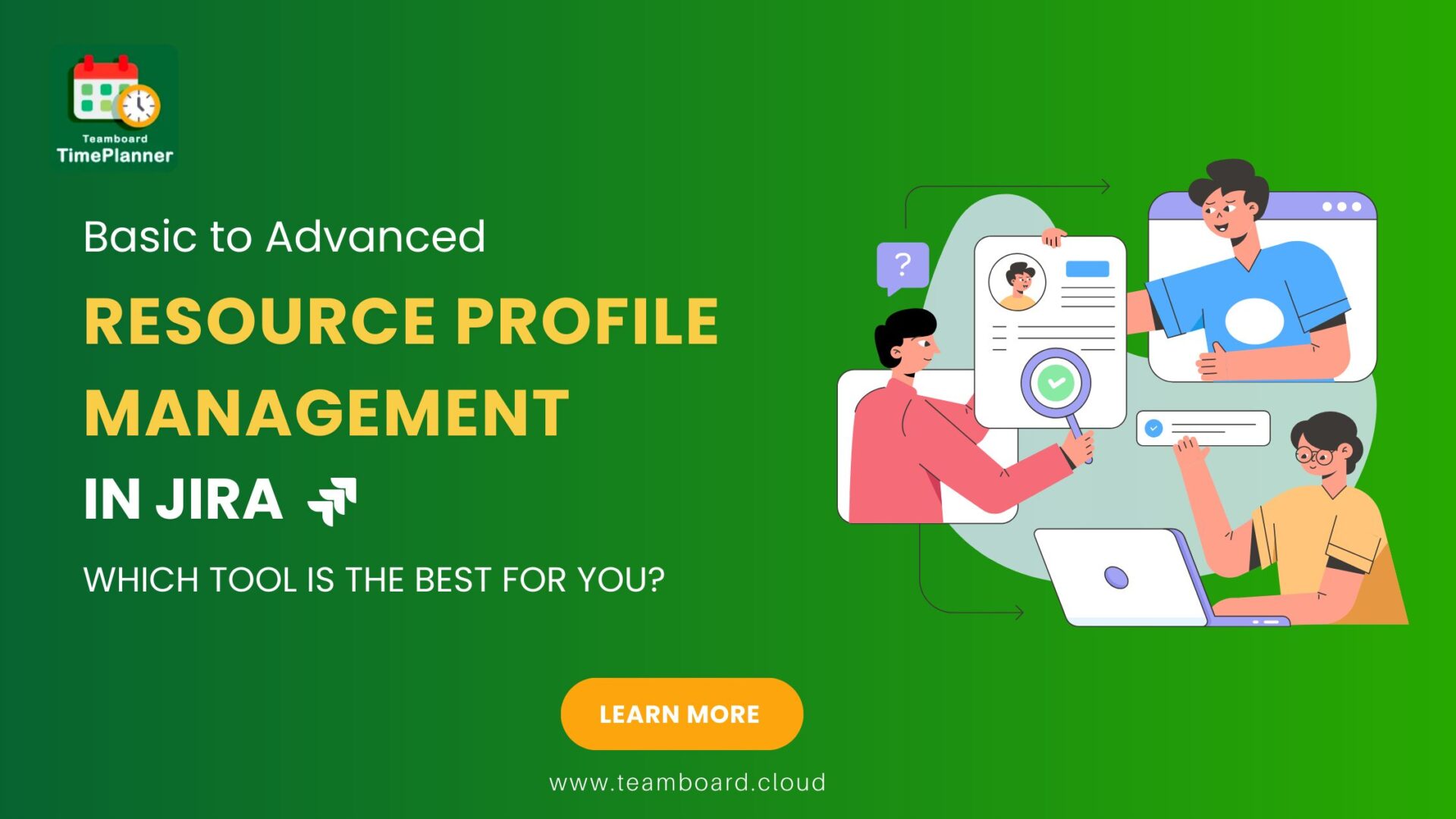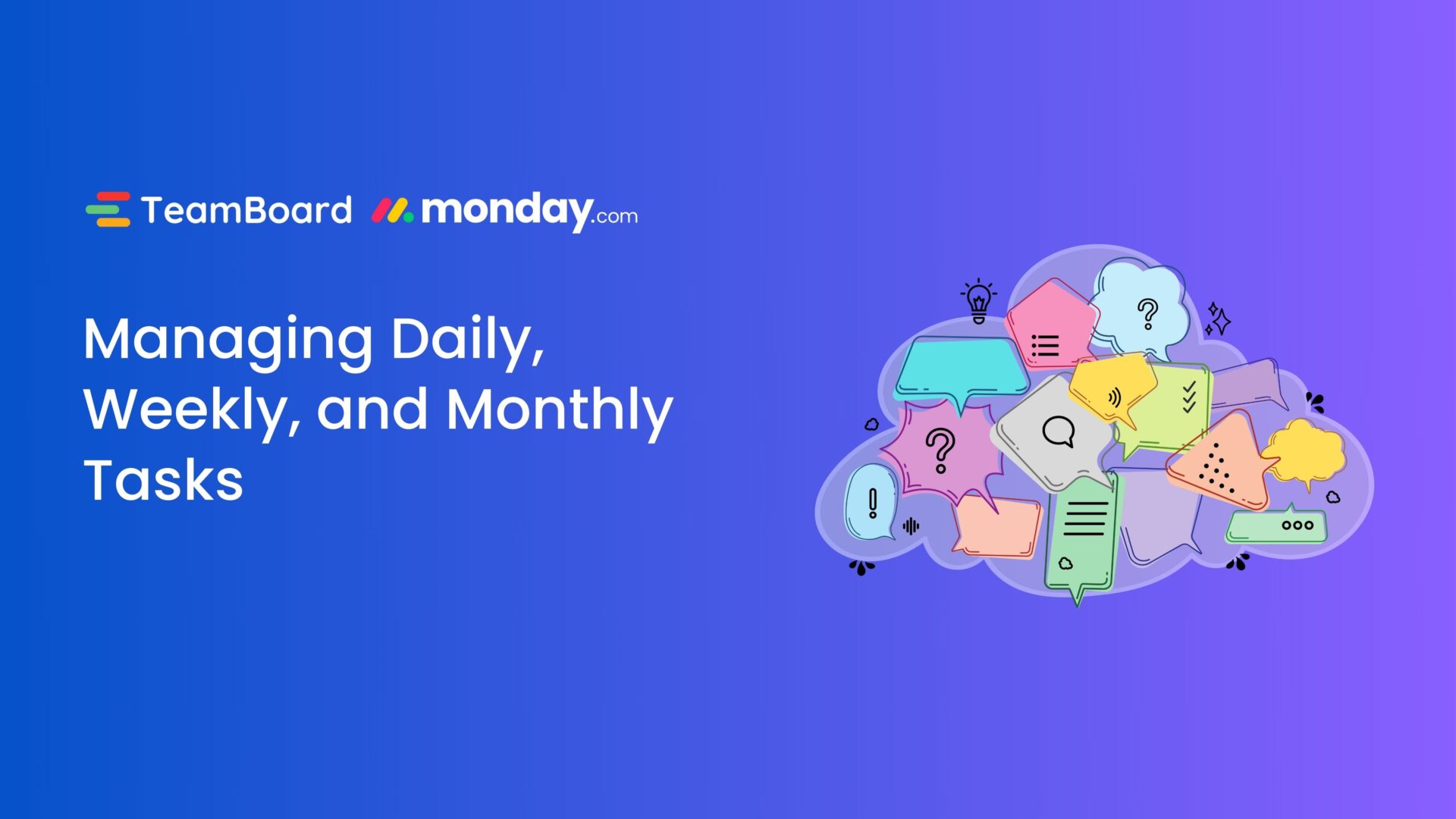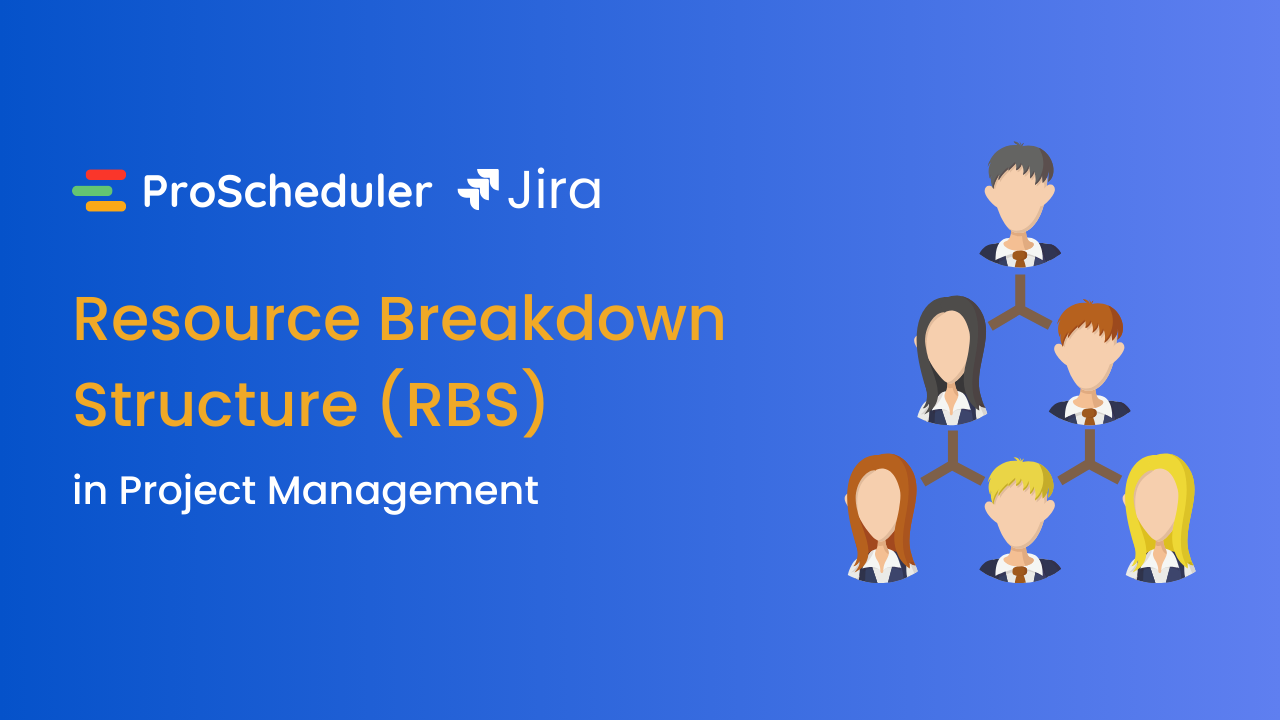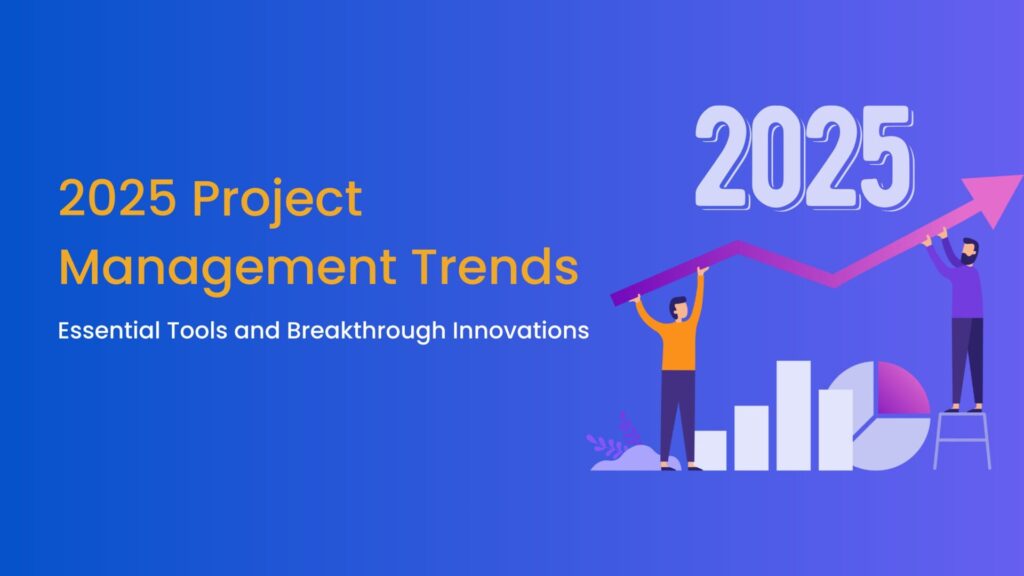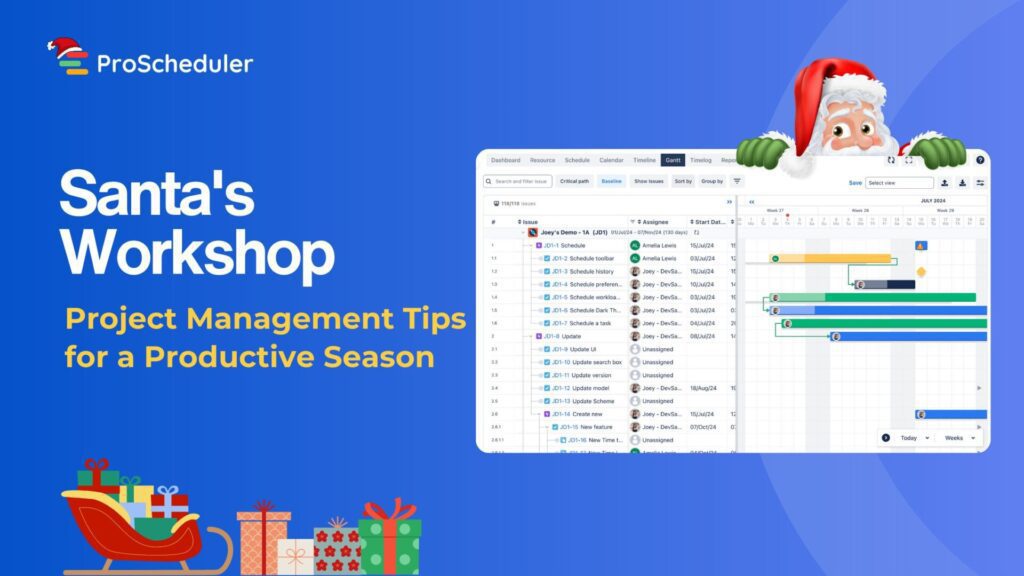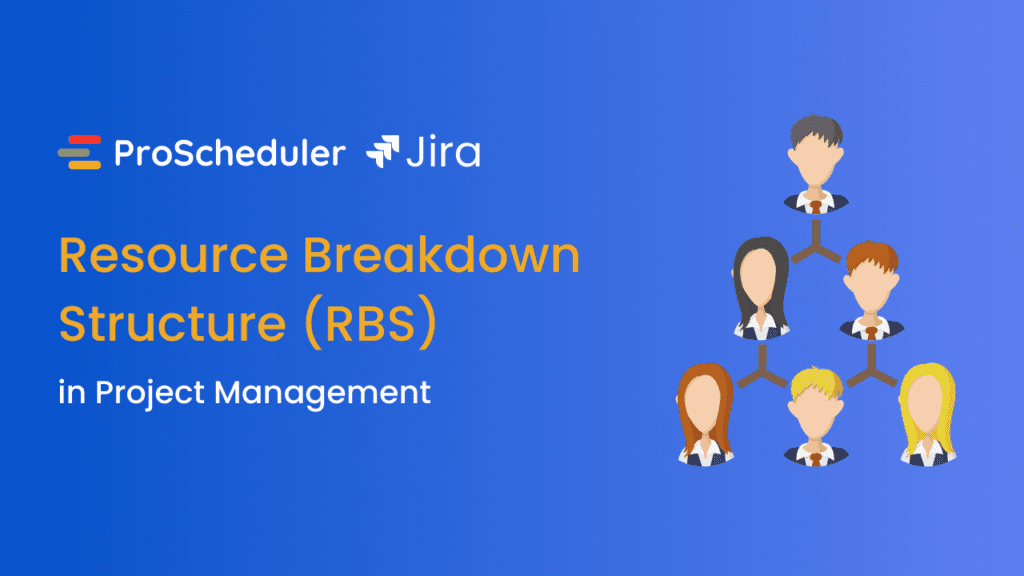Efficient resource management is the backbone of any successful project. It needs to be flexible to adapt to changing environments and bottlenecks. Resource breakdown structure (RBS) is an excellent tool for dealing with that.
It is a hierarchical system that helps you break down the resources needed to complete a particular task before its initiation.
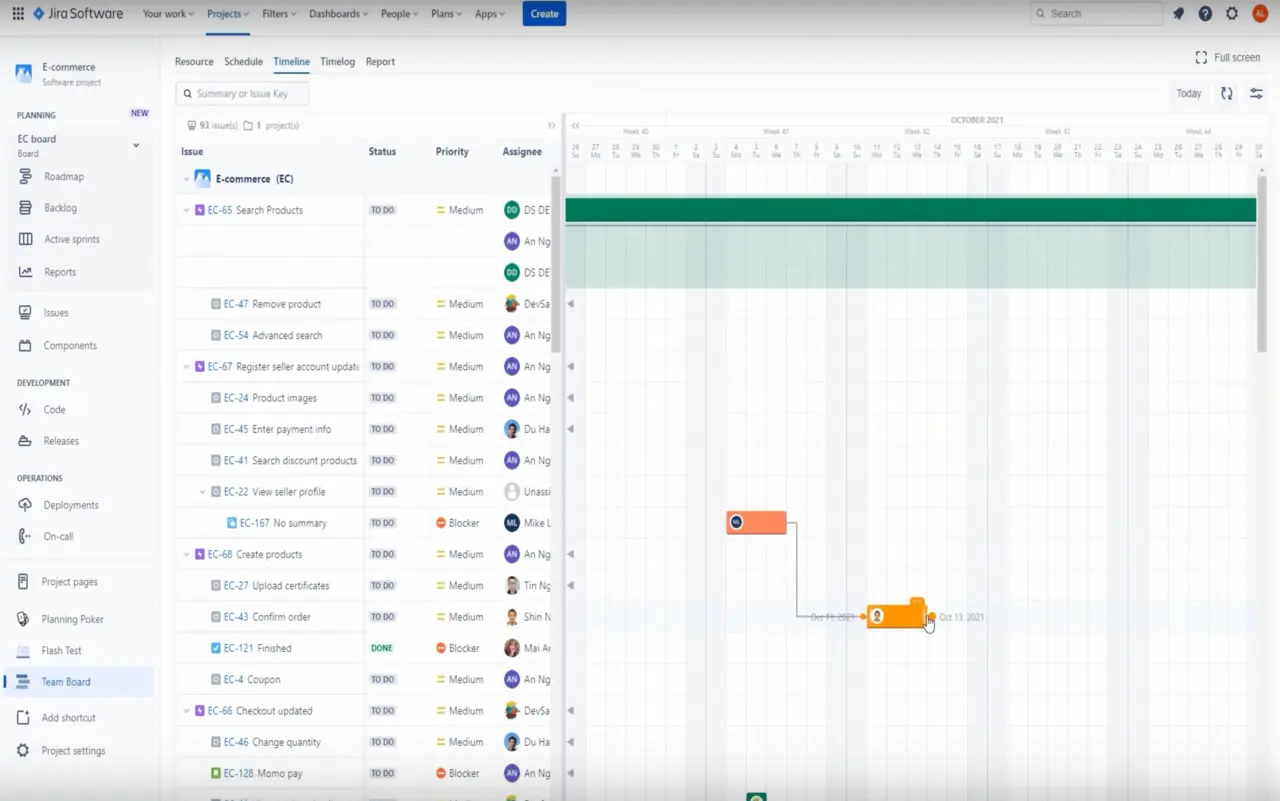
In addition, it includes the efficient allocation of resources and ensures a project’s success. It also contains the details of different resources such as personnel, tools, machinery, materials, fees, etc., needed for the project. Money is not considered part of the Resource Breakdown Structure (RBS), but only the resources bought from it are included.
A Resource Breakdown Structure RBS can look like a list or a detailed organizational chart, depending on how complicated a project is.
Significance & Benefits of the Resource Breakdown Structure (RBS)
The Resource Breakdown Structure (RBS) is a flexible system that can be implemented in various industries to allocate resources efficiently.
Here are some of the most significant benefits of Resource Breakdown Structure (RBS):
- A single source of all the valuable information that helps you throughout the project.
- Identifies resource overlaps and possible interactions between different resources to resolve bottlenecks efficiently.
- A quick way to look at the workload allocation and workforce.
- It limits uncertainty and instability in a project in terms of the supply of resources. It not only helps in the responsible management of resources but also brings transparency into the system.
- This helps managers to look at the bigger picture by making them more organized and efficient. It also helps them make accurate predictions because they have everything in front of them.
- It allows cross-functional correspondence & support among different teams who can share resources seamlessly.
- RBS makes budgetary decisions easier by making projections about total project costs more accurate.
Who Creates a Resource Breakdown Structure (RBS) and When?
Usually, it is the job of the project or resource manager to create RBS with input from their team. It should always be prepared by someone with access to all the required information such as teams, budget, software, equipment, etc.
The right time to create RBS is at the beginning of the project when its execution is still being planned. The estimations prepared initially help managers execute a project more efficiently and accurately.
Once it is prepared, RBS should be distributed amongst all stakeholders. It helps everyone understand the project and keeps it running smoothly.
How to Make a Resource Breakdown Structure (RBS)?
Build a Strong Resource Management Plan
A quality Resource Breakdown Structure (RBS) is based on a strong resource management plan. By creating a template, you have a basic skeleton on top of which you can build your project effectively. By building a template, you’ll know about the interrelated resources and fill the gaps where additional resources are needed.
RBS ensures that the customers know the kind of resources you require. Also, seeking inputs from the team instills a sense of ownership and promotes transparency.
Manage Workforce Assignments
Human resources are perhaps the most important part of any project. Sometimes it can be tricky and challenging to work with people and allocate them to the right spots. Complications further increase when one person handles multiple projects simultaneously.
Therefore, it is crucial to know who is working on which project and ensure employees work only with those resources allocated to them.
Ensuring the compatibility of the skillset of personnel with project requirements is critical for a manager. Moreover, the workforce shouldn’t be overbooked and should be able to work stress-free. When assigning people to different roles, determine their skillset, current duties, seniority, etc.
Manage Resources
While managing human resources is certainly difficult, tracking other resources is no easy feat either. Only a manager with sound judgment and analytical abilities can allocate resources efficiently.
A good manager always weighs the pros and cons of allocating equipment to different tasks and calculates the costs too. Some people mistakenly buy new equipment or hire new talent when they encounter a bottleneck. Doing that isn’t always the right answer, and one should always ascertain whether spending money like that is worth it.
Determine Resource Risk
Every project has some risk associated with it. Resource risk is an essential part of every project and arises when scarce resources have to be allocated to different tasks. Therefore, developing a comprehensive resource risk plan in the RBS is crucial.
It will help you evaluate the risks and their possible impact on your project. Ultimately, this helps you prepare well for any mishaps that might occur down the road.
Resource Breakdown Structure (RBS) Template/Example
Here’s what your Resource Breakdown Structure (RBS) template can look like:
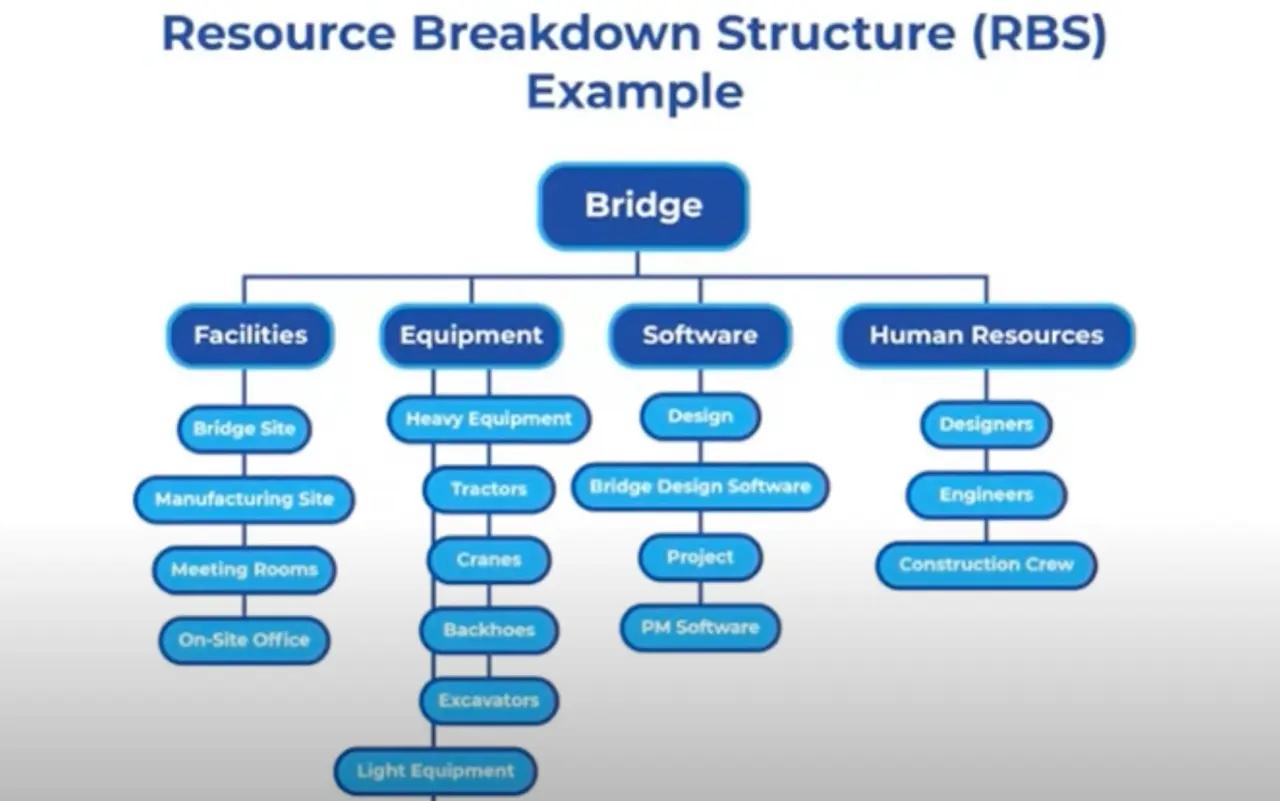
Human Resource
Human resources is the group of people working on your project, who can be divided into different categories based on their position/work. Pre-mentioned work timings can make their workflow smoother. Here’s what a typical HR list might look like:
- Project Manager – Steven
- 2 Website Designers for Coding & UX – Sarah & Paul – for 1 month
- Two Content Writers for blog posts & news – James & Teddy
- 1 Marketing Assistant for targeted emails – Clark
- One Salesperson for digital sales – Samantha
- 1 Logistics Coordinator for delivery – Henry
- One Customer Care Representative for after-sale inquiries & complaints – Abby
Equipment
When it comes to physical resources, a usual breakdown might look like this:
- Computers or laptops leased for $X
- Projectors leased for $X
- Smartphones purchased for $X
- Tablets leased for $X
- The printer bought for $X
Information & Technology
Besides physical resources, you also need intangible resources such as software, apps, design, contracts, etc. Although they aren’t physical, they are crucial for completing any project.
Here’s what a typical technology setup might resemble:
- Newsletter Software for $X
- Project Management Software for $X
- Invoicing Software integrated with the Website, FREE
- Customer Support, FREE
- Design Tools for $X
Create Your Resource Breakdown Structure (RBS)
Without an effective RBS guiding it, your project will face several difficulties. Luckily, ProScheduler by Teamboard is here to help by centralizing the information, maintaining communication, and allowing seamless visibility of different aspects of the project.
It is a versatile tool that allows you to monitor progress across multiple projects and teams with its mobile app. It also helps you determine employee overlap and workload allocation easily.
So, try ProScheduler today and take your resource management to the next level!


